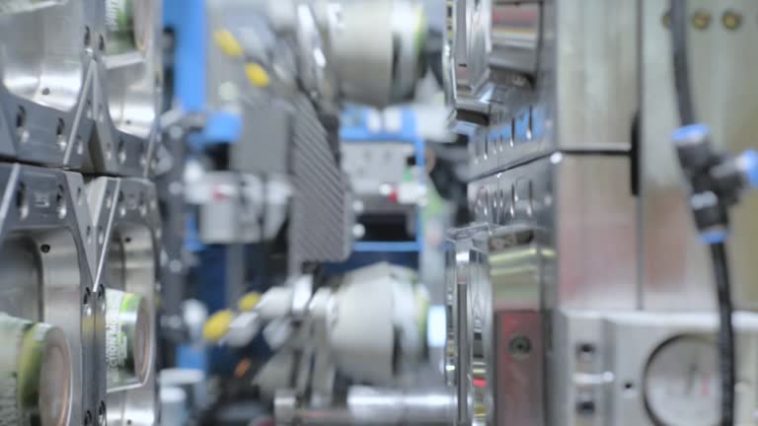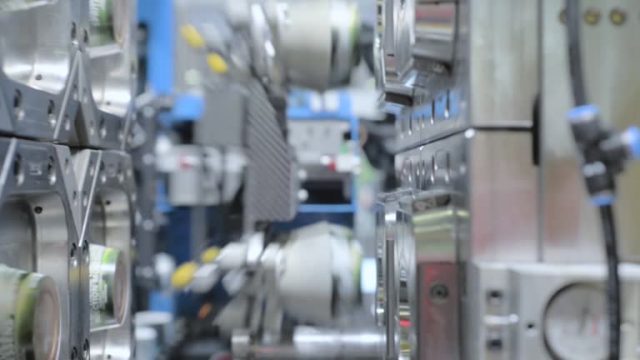Exploring Metal Injection Molding
Metal injection molding (MIM) is similar to plastic injection molding in that both involve injecting material into a mold to create parts, but there are some important extra steps. This article will outline the unique aspects of metal injection molding, focusing on its ability to produce small and intricate metal parts. These parts usually weigh between 1–100 grams and are ideal for applications that require complex shapes and fine details. The process involves mixing fine metal powders with a binder, then injecting this mixture into a mold. Once formed, the parts go through debinding and sintering, which makes them dense and strong. MIM is widely used in industries where mass production of tiny, precise components is needed. The advantages of this process include high precision, excellent surface finish, and the capability to produce complex shapes that are difficult to achieve with traditional methods. However, there are also some disadvantages, such as higher initial costs and the need for specific equipment. This article explores the uses, advantages, and disadvantages of MIM, providing a comprehensive understanding of this specialized manufacturing technology.
What Is Metal Injection Molding?
The metal injection molding process, often shortened to the acronym MIM, begins with a special polymerized metal feedstock made of tiny metal particles combined with a plastic binder. This unique feedstock is injected into a mold cavity under high pressure during the initial molding stage. Once the mold opens, the initial form is released, and the parts are separated from the runners and gates, resulting in what are known as green parts. At this stage, the parts still contain polymer binders and require further processing.
The next step is de-binding, which removes the binders, leaving porous metal known as brown parts. The final step involves heating the parts at high temperatures in a furnace to sinter the metal particles, making them non-porous and nearly fully dense. During this sintering process, the metal particles fuse together, causing shrinkage. To account for this, we plan the manufacturing process by increasing the size of the mold to offset shrinkage, ensuring precise and high-quality metal parts.
Metal injection molding is a process that produces high-quality products by combining metal powder with a binder to create detailed parts with intricate geometry and accurate dimensions. The high pressure and heat used in the process help to reduce inclusions and porosity, resulting in a dense, strong, and high-quality part that meets precise specifications. This makes MIM ideal for applications requiring complex shapes and minimal material defects.
The MIM process is used to produce parts that are typically around 96%-99% dense after sintering, which is significantly higher compared to other processes. This is achieved through metal injection molding using refined powders that result in less porosity, making it ideal for applications requiring high-density components.
Materials That Can Be Molded Using MIM
Metal injection molding can work with a variety of materials, divided into four categories. The first category includes ferrous alloys like steel, stainless steel, tool steel, and iron-nickel alloys such as invar and kovar. The second category consists of tungsten alloys, while the third category covers hard metals like cobalt-chromium, cemented carbides, and cermets. The last category includes special metals like aluminum, titanium, nickel, and molybdenum, making MIM versatile for many applications.
Uses of Metal Injection Molding
Metal injection molding is ideal for high-volume production of small metal parts with complex geometry. Although the initial setup and tooling costs are high, making the process less economically viable for low or medium-batch production, it excels in creating precise components. For projects with low volume, using a rapid prototyping service can help bridge the gap and meet the required production quantities. The MIM process can produce parts that are difficult or even impossible to achieve through other processes, especially when dealing with very thin walls and intricate details.
Applications of Metal Injection Molding
Metal injection molded parts have applications in a wide range of industries, thanks to the versatility of the MIM process. In the automotive sector, MIM is used to produce sensor housings, gear synchronizers, fuel injectors, rivets, and fasteners. It is also one of the biggest uses in the USA for weapons, helping to create components like sight mounts, safety levers, and firing pins. The medical field benefits from the process as well, using medical-grade metals to produce endoscopes, laparoscopic devices, implants, and even dental crowns. For consumer goods, MIM is perfect for making small, intricate parts such as heat sinks, watch cases, buttons, switches, and eyeglasses frames, showcasing its ability to handle complex designs across multiple applications.
Metal Injection Molding Accuracy
Metal injection molding is known for being highly accurate, achieving dimensional tolerances of +/- 0.3–0.5%. Companies like FirstMold’s MIM specialize in this technology, allowing them to manufacture parts that may need post-machine work to add critical features and ensure accuracy. This level of precision is superior when compared to similar methods of manufacturing, such as die casting, which often requires extensive post-process machining to maintain tight dimensions and a finer finish. While the accuracy of metal injection molding is impressive, it can vary for larger parts due to shrink during the sintering process, making them more susceptible to variation.
Metal Injection vs. Plastic Injection Molding and Die Casting
The injection stage of metal injection molding and plastic injection molding is comparable because both involve injecting a plasticized raw material or feedstock into a mold cavity under high pressure. However, the primary difference between these processes lies in the post-processing required. In plastic injection molding, parts are nearly complete when ejected from the mold, while metal injection molding requires additional steps like de-binding and sintering to achieve the desired strength and density. Both processes are effective for producing high-volume parts, but metal injection molding is particularly suited for small parts with complex geometry, whereas plastic injection molding can handle both small and large parts that may also feature complex geometry.
The biggest difference between metal injection molding, die casting, and the MIM process lies in the complexity and requirements of each method. While die casting often requires limited post-processing to produce a final part, metal injection molding involves multiple stages, including debinding and sintering steps. These extra steps can lead to an increased cost of the raw material, but they also allow for the production of smaller, more intricate parts with accurate dimensions. As a result, the metal injection molding method is often better suited for parts that demand precision, whereas die casting is typically cost-effective for larger metal parts.
In terms of speed, the initial injection stage of metal injection molding can be faster, but the overall process, including post-processing, is where die casting shines, making it quicker for producing large quantities of parts. This distinction makes each method suitable for different applications depending on the project’s needs and specifications. For industries needing high accuracy and detail, metal injection molding offers significant advantages despite its longer processing time and additional costs.
In conclusion, metal injection molding is a versatile and precise manufacturing process suitable for creating small, intricate metal parts. Its unique ability to produce components with mold texture and the high production capacity it supports make it an essential technology for industries that require complex shapes and high-quality finishes.


